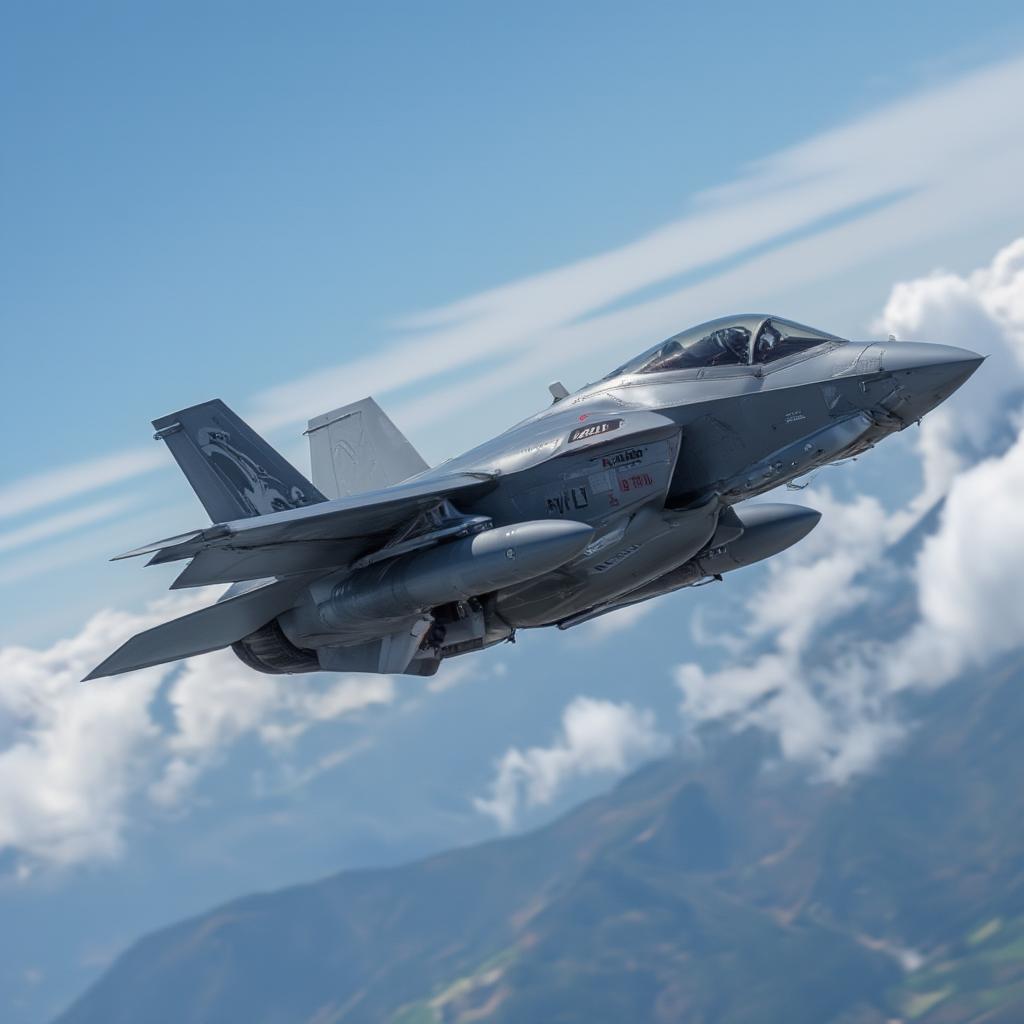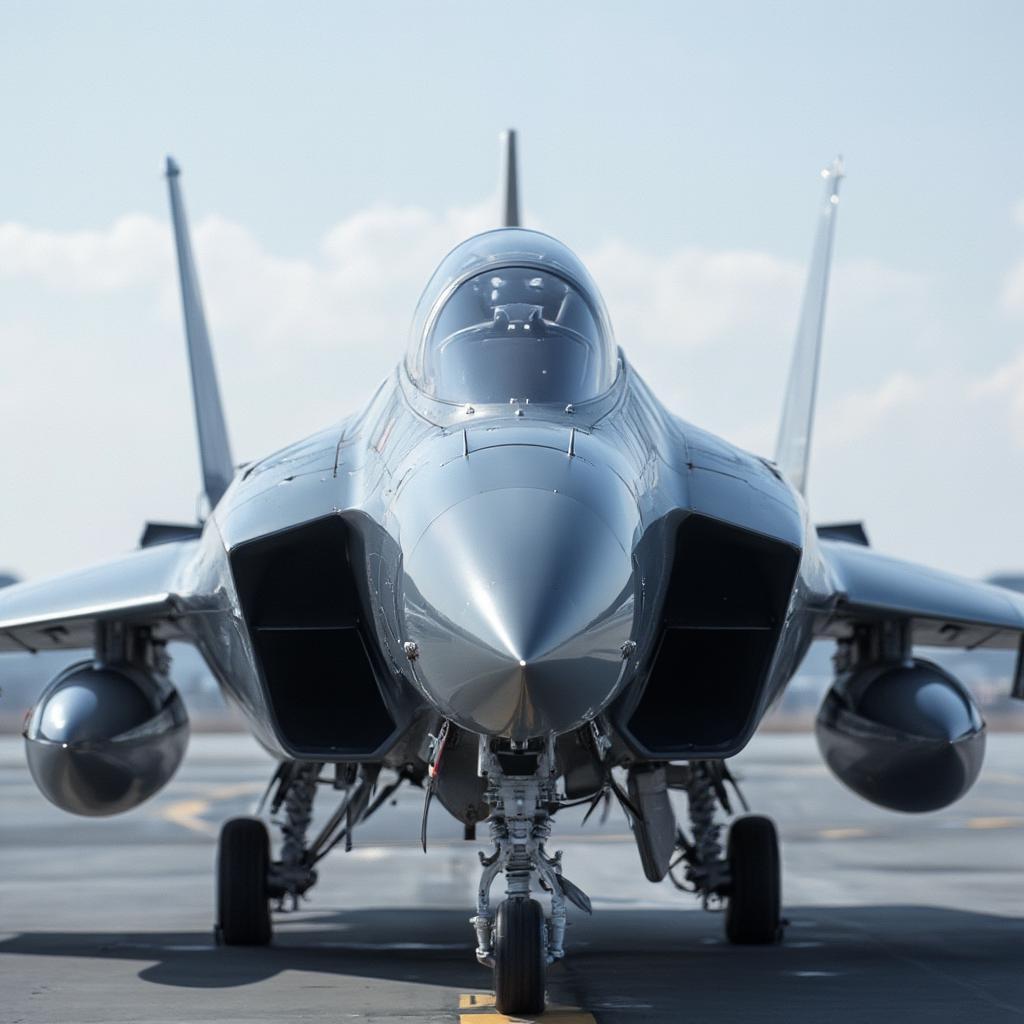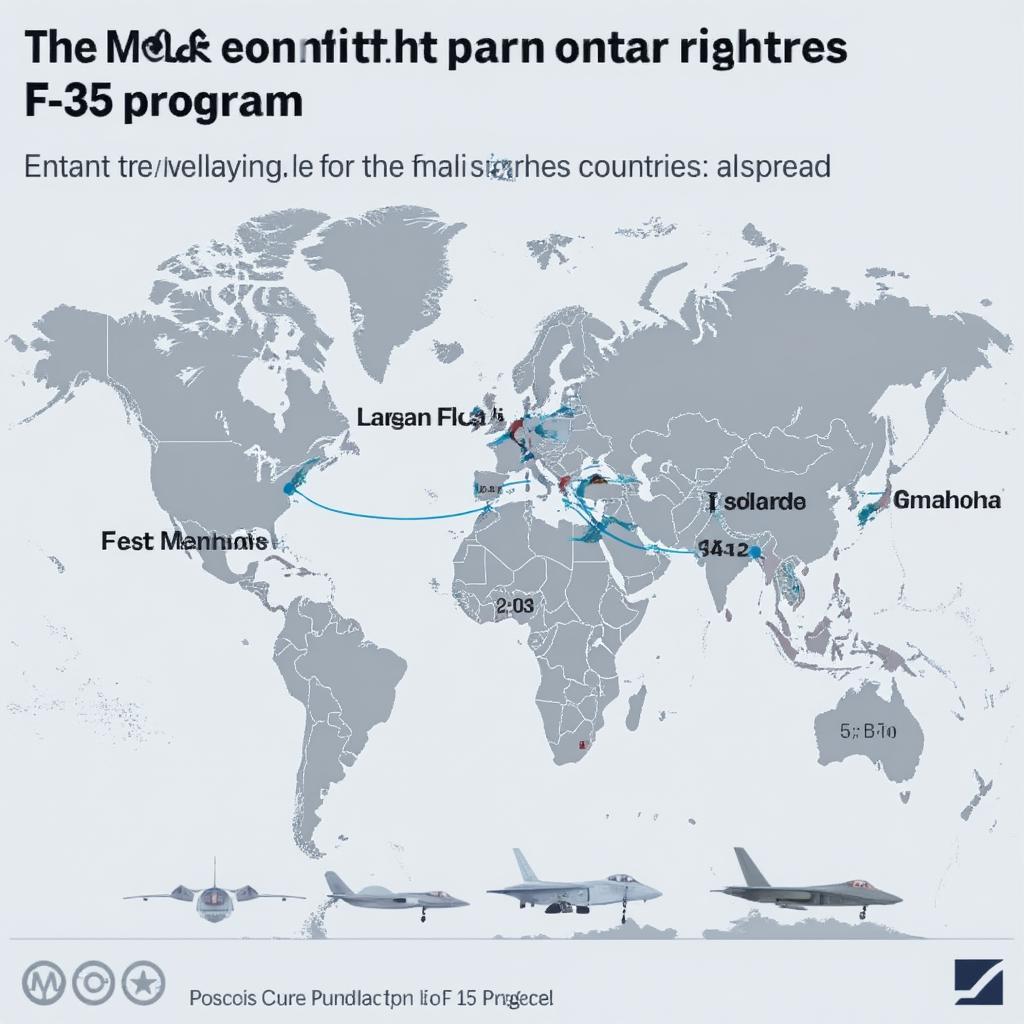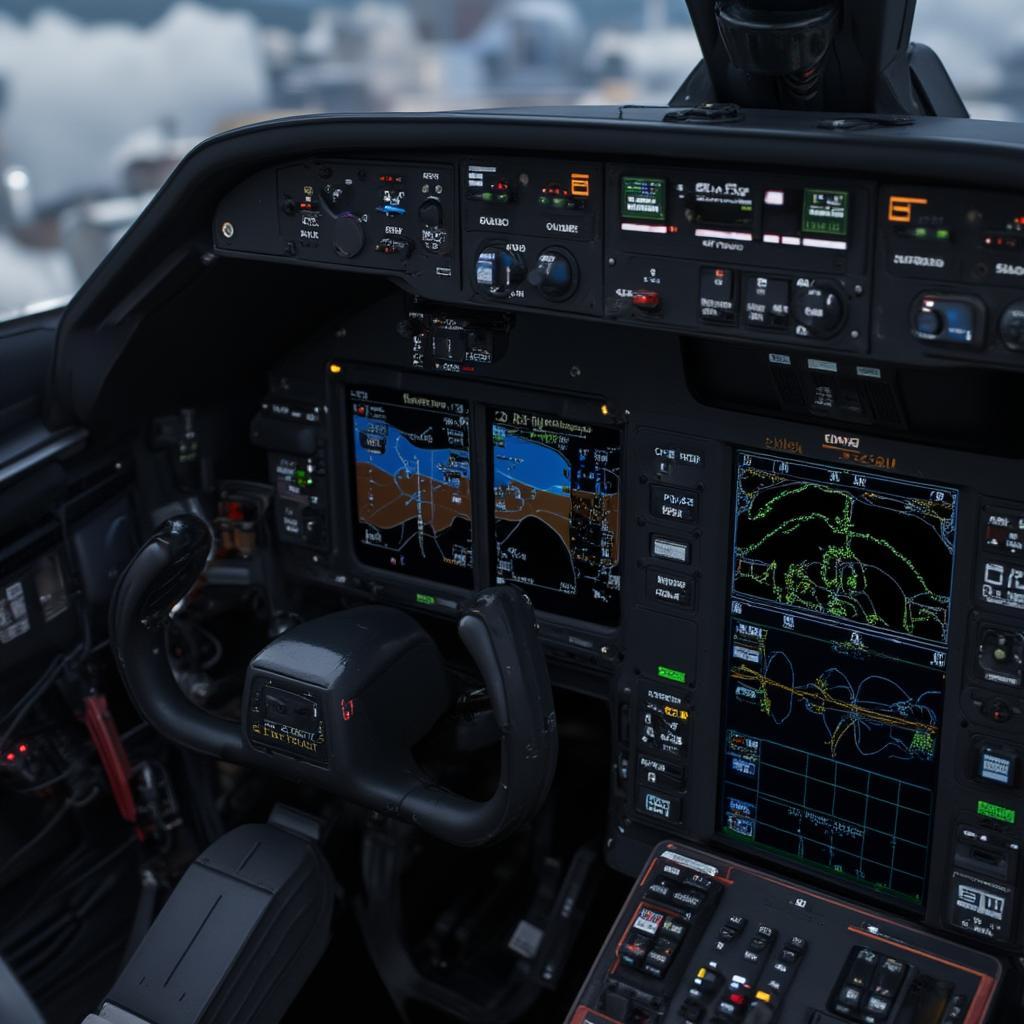F 35 Jet Top Speed: Unveiling the Lightning II’s Velocity

The F-35 Lightning II is a marvel of modern aviation, renowned for its stealth capabilities and cutting-edge technology. But beyond its advanced sensors and combat systems, the question of its speed often arises. What is the F 35 Jet Top Speed, and how does it stack up against other aircraft? Let’s delve into the velocity of this formidable fighter, exploring its capabilities and limitations.
The F-35 isn’t designed to be the fastest jet on the planet; rather, its speed complements its overall mission profile as a multi-role fighter. Its top speed is crucial for tactical considerations, enabling rapid response and effective engagements. This isn’t merely about brute force velocity; it’s about the right speed for the job.
Understanding the F-35’s Speed Capabilities
The F-35 boasts a top speed of approximately Mach 1.6, which translates to roughly 1,200 miles per hour (1,930 kilometers per hour) at altitude. This figure, while impressive, is not the whole story. It’s important to understand that factors such as payload, altitude, and atmospheric conditions significantly impact its actual speed.
Factors Affecting the F-35’s Top Speed
- Payload: The F-35 carries various weapons, fuel, and electronic warfare systems. The heavier the payload, the more it affects the overall speed and maneuverability.
- Altitude: Air density decreases at higher altitudes, enabling aircraft to reach greater speeds. The F-35 typically achieves its top speed at higher altitudes where air resistance is lower.
- Atmospheric Conditions: Temperature, humidity, and wind can all influence how quickly an aircraft can fly. These external factors play a critical role in real-world flight operations.
- Engine Performance: The F135 engine, the heart of the F-35, is designed for a balance of power and efficiency. While it allows for high speeds, it’s calibrated to prioritize thrust for combat maneuvers and stealth.

How Does the F-35’s Speed Compare?
It’s crucial to compare the F-35’s speed with other modern fighter jets to get a complete picture. The F-35’s speed isn’t about beating all the speed records; it’s about striking the perfect balance between power, speed, and other critical capabilities such as stealth and advanced avionics. For instance:
- F-22 Raptor: This air-superiority fighter can reach speeds above Mach 2.25. The F-22 focuses primarily on air-to-air combat, which requires higher speeds for interception and dominance.
- F/A-18 Super Hornet: A versatile carrier-based fighter, the F/A-18’s top speed is around Mach 1.8. It is more focused on being a multirole fighter and has a good balance between speed and payload capacity.
- Eurofighter Typhoon: With a top speed exceeding Mach 2, the Typhoon prioritizes speed and maneuverability. It’s designed for air-to-air combat, making high speed and quick maneuvering necessary.
While the F-35 might not win in a flat-out speed race, its combination of stealth, advanced sensors, and tactical versatility makes it a more potent overall combat platform.
“The F-35’s speed should be viewed within the context of its multi-role capabilities. While it’s not the fastest fighter, its velocity is sufficient for the missions it’s designed to perform. It’s the combination of speed, stealth, and sensors that makes it so effective.” – Dr. Amelia Reyes, Aerospace Analyst, Shock Naue.
The F-35’s Speed in Combat Scenarios
The f 35 jet top speed isn’t just about straight-line velocity. It’s about how it’s used in dynamic combat situations. Here are several crucial aspects of how speed enhances its combat effectiveness:
- Rapid Deployment: The F-35’s speed allows for quick deployment to critical zones, giving the military a swift response capability to emerging threats.
- Interception: High speed permits quick interception of enemy aircraft or missiles, providing an added layer of air defense.
- Escape and Evasion: When engaged, the F-35 can employ its speed to disengage from adversaries, particularly in conjunction with its stealth technology, allowing it to break off and reengage.
- Air-to-Ground Attack: High speed can enable quicker ingress and egress in high-threat areas, minimizing exposure and increasing survivability during ground attack missions.
Integrating Speed with Stealth and Sensor Technology
The F-35’s real strength lies in how it integrates its speed with stealth, sensor technology, and data networking. These elements synergize to make the F-35 a force multiplier on the modern battlefield.
- Stealth: The F-35’s low observability, coupled with high speed, makes it difficult to track and intercept, giving it a significant tactical advantage.
- Advanced Sensors: Its radar, electronic warfare suite, and sensor fusion capabilities allow it to detect, identify, and target threats at significant ranges.
- Data Networking: It can share data with other aircraft and command centers, providing a comprehensive battlespace picture, enhancing situational awareness, and enabling coordinated engagements.
“The F-35 isn’t about winning a speed contest; it’s about winning the larger air warfare puzzle. Its ability to combine speed with advanced sensors and stealth tech gives it a decisive edge.” – General David Harper, USAF (Ret.), Military Strategist.
Is the F-35’s Speed Sufficient?
Given the F-35’s focus on multi-role capabilities, is its speed enough? For the missions it is designed for, the answer is unequivocally yes. The F-35 is designed to perform multiple roles, including air-to-air combat, ground attack, electronic warfare, and intelligence gathering.
Balancing Speed with Multi-Role Functionality
The F-35’s design prioritizes a balanced approach to its capabilities rather than excelling in any single area such as outright speed. Here is why this matters:
- Stealth Optimization: A critical aspect of the F-35’s design is its stealth. Higher speeds often require design compromises that could affect its low observability.
- Sensor Integration: The F-35’s advanced sensor suite requires space and power, and these systems must work in harmony with the airframe and engine.
- Multi-Mission Capabilities: The design focuses on adaptability, balancing various requirements like weapons payload, internal fuel capacity, and sensor technology.
- Cost Effectiveness: Optimizing for a practical speed allows for cost-effective manufacturing and maintenance, maximizing its availability and mission readiness.
Future Trends in Fighter Jet Speed
As we look to the future of aviation, what will be the next steps in fighter jet speed? There are several trends to consider:
- Hypersonic Technology: The pursuit of hypersonic speeds, greater than Mach 5, is becoming increasingly relevant. Hypersonic weapons and aircraft would dramatically alter the pace and character of warfare.
- Directed Energy Weapons: The integration of laser weapons and high-powered microwave systems could reduce the reliance on speed in some tactical contexts, affecting the priority placed on speed in future fighter design.
- Artificial Intelligence: AI-driven flight and combat systems could change how fighter pilots use speed, enabling better decision making and tactical adaptability during operations.
- Unmanned Combat Aerial Vehicles: The development of high-speed UAVs could shift the requirements for manned fighter jets, potentially relegating certain high-speed missions to drones.
“Future fighter jets will likely rely on speed in combination with advanced technologies such as AI and directed energy. Speed will still play a crucial role, but it will be integrated differently than it has been in the past.” – Professor Robert Steiner, Aviation Engineering at MIT.
Conclusion: The F-35’s Speed in Context
The f 35 jet top speed of approximately Mach 1.6 is a key part of its overall capability. While it may not be the fastest fighter jet, its speed, when combined with advanced stealth, sensors, and data networking, makes it an extremely effective combat platform. The F-35 is not just about straight-line speed; it’s about leveraging that speed within a larger ecosystem of technologies to dominate the modern battlefield. This balanced design ensures it can effectively handle various missions, making it a crucial asset in modern warfare. Understanding its capabilities in a holistic context is essential to appreciating its role and importance in global security.
FAQ: F-35 Lightning II Top Speed
1. What is the official f 35 jet top speed?
The official top speed for the F-35 Lightning II is approximately Mach 1.6, which is around 1,200 miles per hour (1,930 kilometers per hour) at high altitudes. It is a crucial component of its overall combat capability.
2. How does payload affect the F-35’s speed?
Carrying a heavier payload, such as weapons and extra fuel tanks, can reduce the F-35’s top speed and maneuverability, as it adds to the overall weight of the aircraft, which in turn creates more drag.
3. Is the F-35 slower than the F-22 Raptor?
Yes, the F-22 Raptor has a higher top speed (above Mach 2.25) than the F-35. The F-22 is designed for air superiority, while the F-35 has a broader, multi-role mission. The F-35 prioritizes multi-role functionality over raw speed.
4. Why isn’t the F-35 designed to be the fastest jet?
The F-35’s design prioritizes a balance of speed, stealth, sensor technology, and multi-role capability. This approach makes the aircraft more versatile and cost-effective for a wider range of missions, meaning it does not emphasize high speed over all other critical technologies.
5. How is the F-35’s speed used in combat?
The F-35’s speed is crucial for rapid deployment, interception, escape and evasion, and quick ingress/egress during ground attack missions, ensuring quick and effective military operations.
6. What is the role of stealth in the F-35’s combat effectiveness?
The combination of stealth and speed enables the F-35 to evade enemy detection while conducting high-speed maneuvers, giving the fighter a significant tactical advantage.
7. How does sensor technology work with the F-35’s speed?
The F-35’s sensors provide enhanced situational awareness, enabling it to quickly identify threats. Its speed then allows it to swiftly respond, engage or evade those identified threats.
8. What is the significance of data networking in the F-35’s design?
Data networking allows the F-35 to share information with other assets, providing a comprehensive picture of the battlespace. This enhances the situational awareness and coordination, thus increasing the overall combat effectiveness of the aircraft.




